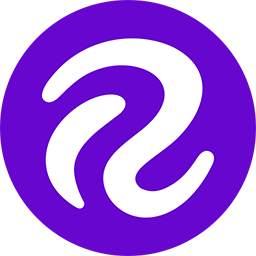
Roboflow is a platform that helps developers and machine learning engineers to build and deploy computer vision models. It provides tools for each stage of the computer vision pipeline, such as data management, annotation, training, and inference. Roboflow supports various image and video formats, annotation types, training frameworks, and deployment environments. It also enables collaboration and automation through open APIs, SDKs, integrated developer tools, and rich documentation.
Roboflow is a platform that helps developers and machine learning engineers to build and deploy computer vision models. It provides tools for each stage of the computer vision pipeline, such as data management, annotation, training, and inference. Roboflow supports various image and video formats, annotation types, training frameworks, and deployment environments. It also enables collaboration and automation through open APIs, SDKs, integrated developer tools, and rich documentation.- Datasets: You can upload images and video from your own buckets in 40+ annotation and image formats via API. You can also filter, tag, segment, preprocess, and augment image data by metadata, train/test split, or location of image. You can track multiple versions of datasets for experimentation and use text-based semantic search and CLIP vectors to find similar data and anomalies.- Labeling: You can use AI-assisted labeling for bounding boxes, polygons, and instance segmentation. You can also automatically annotate images using an existing model or pre-trained models that detect common objects in your dataset. You can use fast labeling workflows like keyboard shortcuts, intelligent defaults, and integrated label creation to annotate hundreds of images in minutes.- Models: You can train state-of-the-art computer vision models using TensorFlow, PyTorch, Keras, Hugging Face, and other frameworks. You can also use notebooks to access a collection of open source Jupyter notebooks that show how to train and work with the latest computer vision models. You can use supervision to access a range of utilities that help integrate computer vision into your application, covering functions from annotation to object tracking.- Deployment: You can deploy your computer vision models to various environments such as NVIDIA Jetson, Raspberry Pi, SageMaker, Azure, NVIDIA TRT, Kubernetes, Luxonis OAK, etc. You can also use inference APIs to run predictions on new images or video streams.Roboflow is used by over 250,000 engineers to create datasets, train models, and deploy to production. It is also used by various industries such as security, banking, retail, automotive, aerospace & defense, government, oil & gas, agriculture, manufacturing, telecommunications, healthcare, utilities, etc.Roboflow offers different pricing plans for different needs. For individuals with personal projects, school assignments, or research projects, Roboflow offers the Public plan to encourage exploration of computer vision. All projects on the Public plan are shared on Roboflow Universe. For businesses, Roboflow offers the Starter and Enterprise plans. The Starter plan is suitable for small teams that need basic features and support. The Enterprise plan is suitable for large teams that need advanced features and support.Roboflow is a platform that gives your software the power to see objects in images and video. It helps you build and deploy computer vision models faster and easier.
